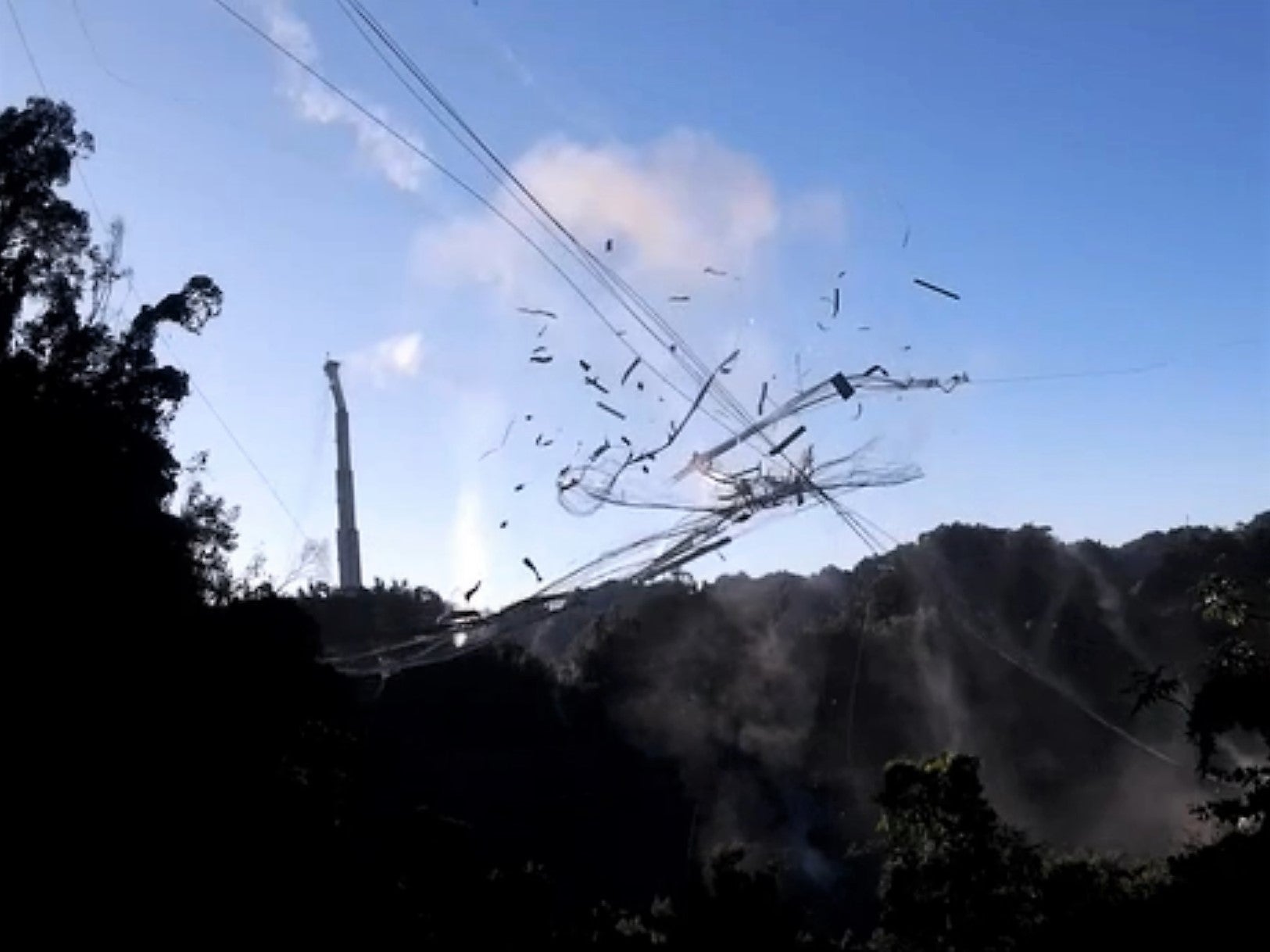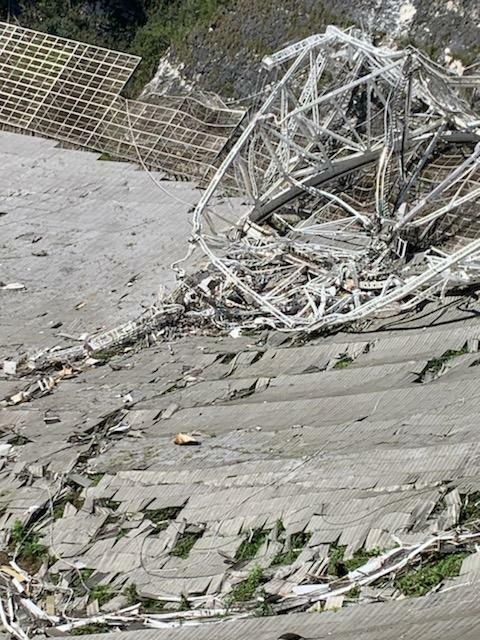
Gordon of Cornell University recognized the karst sinkhole in Arecibo as a perfect natural location for a giant telescope.

The NSF had announced that they were hoping to keep other elements of the observatory open. They had determined that it would be too dangerous to repair the telescope and were planning to close it. Two cables had broken, and the National Science Foundation had predicted that the dish could collapse on its own. RELATED ARTICLE: Puerto Rico Allots $8 Million Funding for Possible Reconstruction of the Arecibo TelescopeĬheck out more news and information on Space on Science Times.The observatory at Arecibo, until a couple of years ago the home of the largest radio telescope in the world, has lost the telescope in a collapse. It's been a difficult time at Arecibo, but there's cause to be hopeful. Last month, the observatory proposed a $450 million "Next Generation Arecibo Telescope" project. More information about the Arecibo Observatory and its prospects should be available at a group workshop scheduled for April.Įxperts could also rebuild the radio dish at the facility. It added that reconstruction would "require varying degrees of commitment and financing." The National Science Foundation says it's too early to predict if they could rebuild or restore the facility to support various research endeavors. The National Science Foundation is also collaborating with the State Historic Preservation Office of Puerto Rico and the Federal Advisory Council on Historic Preservation on the "defense and preservation of historically significant elements of the buildings and place." Objects discovered during the cleaning period that are valuable or worthwhile may be displayed at the observatory or submitted to museums. The cleanup crew is now testing groundwater and surface water near the site.Īccording to Gizmodo, a "Stormwater Pollution Prevention Plan" is being developed to "prevent sediment and contaminants from migrating offsite." NSF is also conducting wildlife and vegetation surveys to aid in the protection of endangered species.Īssociated Press said the multimillion-dollar cleanup entails the workers' well-being on the property and the atmosphere in the surrounding area and the need to correct historical and cultural heritage issues. Hydraulic oils that Arecibo emitted after the collapse are being sampled and collected from the soil. The agency hired a firm specializing in flood cleanup and environmental remediation. RELATED ARTICLE: Initial Investigations Suggest Possible Reason Behind Collapse of Arecibo Observatory Telescope Some buildings sustained minor damage from falling debris that engineers should repair. It reported that damage to infrastructure other than the main 305-m dish and support structures was minimal. The foundation noted the damage to the dish and the three support towers. According to the study, the observing platform and its instruments are useless for scientific purposes. The debris from the failure, according to NSF, was located inside danger zones identified by engineers following a previous cable break in November. The NSF is requesting that the National Academies of Sciences, Engineering, and Medicine conducted an "expedited independent report on to the cause of the cable failures. The final reports are due in December 2021. Arecibo Telescope Collapse: What Did NSF Say?Ī private consultant and experts from NASA's Kennedy Space Center are currently conducting a forensic study to ascertain the cause of the initial auxiliary cable socket malfunction.
ARECIBO TELESCOPE DAMAGE BY MARIA UPDATE
They added a cost estimate for the cleanup, a rundown of the facility's damage, and an update on the cleanup, among other things. However, the NSF did include some new information.


However, the observation platform suspended above the disk broke loose from one of the three towers supporting it and smashed into the dish below before the work could begin. The organization decided that the iconic telescope's supervised destruction was the safest choice after the report effectively-outlined what it had previously reported regarding harm the telescope suffered in August and November 2020. However, SpaceNews said the National Science Foundation had just 60 days from the date of passage of the Consolidated Appropriations Act of 2021 to deliver the paper. A bill requested the foundation's report on the cause of the 305-meter radio telescope's failure, as well as possible proposals for the site.Īuthorities are still investigating the cause of the fall of the Arecibo Observatory in Puerto Rico. NSF issued a seven-page report to Congress on March 5 outlining the disaster's aftermath and potential next steps. Puerto Rico experienced widespread damage including most of the electrical, gas and water grid as well as agriculture after Hurricane Maria, a category 4 hurricane, passed through. ARECIBO, PUERTO RICO - SEPTEMBER 29: The Arecibo Observatory is seen after it was hit by Hurricane Maria on Septemin Arecibo, Puerto Rico.


 0 kommentar(er)
0 kommentar(er)
